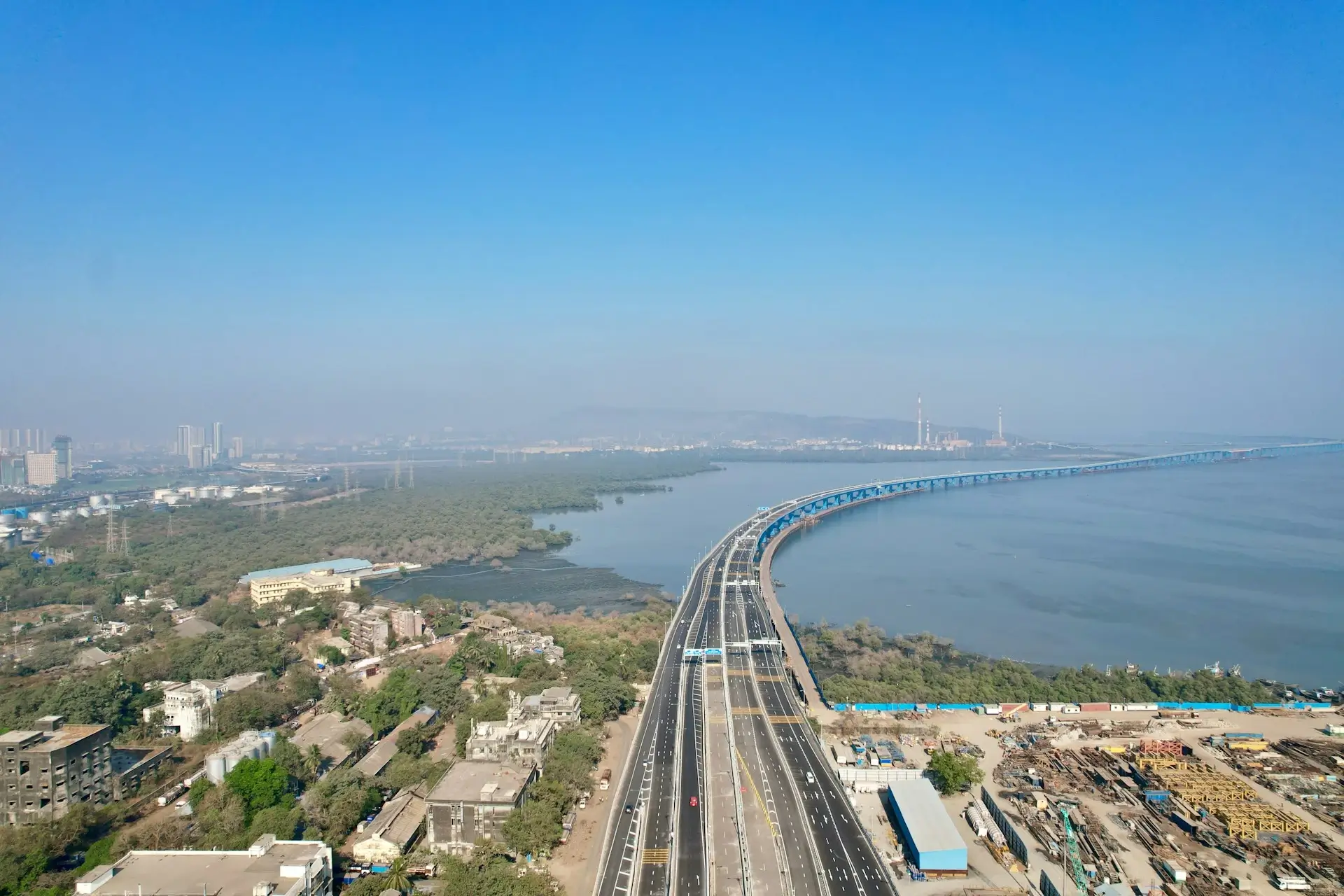
Mumbai Trans Harbour Link (MTHL) Revolutionizes Connectivity in India’s Metropolis Hubs
A New Era of Connectivity Begins
The Mumbai Trans Harbour Link (MTHL), officially known as the Atal Setu Nhava Sheva Sea Link, has finally become operational after six years of construction. Inaugurated on January 12 by Prime Minister Narendra Modi, this 22-km-long sea link is a testament to India’s commitment to enhancing connectivity across its key metropolis hubs. The MTHL is strategically engineered to last for 100 years, incorporating advanced Japanese technology in its construction, making it a shining example of India’s infrastructure projects.
Boosting Regional Economic Development
The Mumbai Trans Harbour Link sea bridge links with the Mumbai Pune Expressway. This connection significantly improves connectivity between Mumbai and Pune, Maharashtra’s largest cities. Furthermore, this infrastructure upgrade enhances connectivity across the Mumbai Metropolitan Region. It covers Mumbai, Thane, Palghar, and Raigad districts, promoting economic development regionally. Additionally, the MTHL alleviates congestion on existing routes like the Vashi bridge. It reduces travel time between Sewri and Chirle to within 20 minutes. Consequently, the Mumbai Trans Harbour Link plays a crucial role in boosting regional connectivity. It facilitates efficient transportation and economic growth in the metropolitan area.
A 60-Year Vision Realized
The Mumbai Trans Harbour Link connects Sewri and Chirle, conceptualized decades ago. This twin-carriageway six-lane bridge spans the Thane Creek in the Arabian Sea. Additionally, it comprises a 16.5 km sea link and 5.5 km viaducts. The MTHL features an open road toll system and orthotropic steel deck technology. Moreover, this project marks a significant milestone in India’s infrastructure development journey. It enhances connectivity between the industrial area and the mainland district. Consequently, the infrastructure project is a remarkable achievement in improving regional connectivity.
Enhancing Connectivity and Reducing Congestion
The MTHL is designed to reduce congestion on existing routes, such as on the Vashi bridge, and promote smoother traffic flow. Additionally, the MTHL will improve the overall quality of life for residents and commuters in the Mumbai Metropolitan Region. By providing an alternative route, the MTHL will reduce travel time and increase the efficiency of the transportation network.
A Blueprint for Future Infrastructure Projects
The Mumbai Trans Harbour Link (MTHL) exemplifies India’s dedication to world-class infrastructure. As a pioneering project, it paves the way for future endeavors. Moreover, the MTHL addresses complex transportation challenges through innovative solutions. It sets a high benchmark for infrastructure development in urbanizing India. Ultimately, this game-changing project boosts connectivity and economic growth regionally. The MTHL enhances the Mumbai Metropolitan Region’s connectivity significantly.
